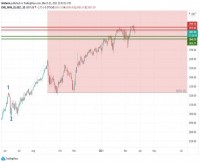|
Practitioner Viewpoint The Super-Cycle Correction Our author is Alan Rohrbach, president and chief analyst of capital markets consultants Rohr International Inc. Long a proponent of an approach that recognizes broad cyclical trends, here he argues that trend analysis offers advantages for understanding markets in the super correction we're living through. Mr. Rohrbach started his career on the Chicago Mercantile Exchange and has taught the exchange's technical analysis course. Through the Rohr Report he has assisted portfolio managers and dealers as well as corporate financial managers for over 25 years. Incorporating fundamental analysis and technical projections into a broad ‘macro' focus, he analyses trends in major financial markets along with energy and gold. Gloria Steinem famously said, “The first problem for all of us, men and women, is not to learn, but to unlearn.” While she was referring to gender relationships, that is a very good precept for enlightened portfolio management. Too much of what passes for qualified analysis and portfolio theory is plagued by over-reliance on assumptions, often including faith in the general upward trend of equities and economies. Once in a couple of generations, ‘buy-and-hold' and even the best models are significantly derailed by what I call a super-cycle correction. Even the most sophisticated managers can suffer from too great a reliance on models that distract from understanding the underlying asset trends and corrections. The long-term charts below illustrate the similarities between the October 2008 equity market failure and September 1930 technical failure of that era's bull trend. Despite the gains in equities since early March, it is likely that the current market outlook is for a distended bottoming phase similar to the one that prevailed through the 1930s and even into the 1940s. A picture is worth a thousand words. The 1920s over-extended credit bubble ended in a period of major insolvency. That required decades of slow rebuilding of wealth before a sustained bull market could emerge once again. The manifestation of this in stock prices was a distinct inability to go above the technical failure level of 1930—the Dow Jones Industrial Average of 220. This historic pattern has implications for the price recovery potential after October 2008. And the economic fundamentals are completely consistent with this technical view. Last October's equivalent DJIA failure below the major trend channel support from the 1974 low (indicated by the A lines in chart 2) was indicative of a similar end of an era. And it likely heralds a period of broad liquidation and price basing to come prior to any sustained recovery back above the Dow 10,000 area. It is also interesting that prospects for corporate earnings and multiples wholly support that view. The difference is we do not yet know how low ‘low' is. In spite of my Channel B projection from the 1932 low showing upper 5,000 area support for the DJIA, that is only a working assumption. On some historic statistical measures 5,000 is optimistic. What we do know is that the unwinding of the bubble will cause significant multi-month bidirectional swings in equity markets and will also affect other asset classes. This is a failure of the ‘fundamental' economic long-term growth cycle that was in place since the mid-1970s trough. The over-extension and collapse of the credit cycle is part of the story. Of course, this is merely a basic view that requires supporting with quite a few other indicators and close monitoring. The main point is to recognize a simple fact of investment life, namely that there are major trends and cycles and they interact. In particular: Portfolio managers need to ‘un-learn' the idea that serial variations of the buy-and-hold strategy are always viable. The received wisdom from some quarters is “if you have not sold you have not really taken a loss.” Our corollary to that somewhat misguided axiom is: “If you have never sold, you have never actualized a profit.” This is the reason portfolio managers might benefit from the perspective of successful trend analysts and embrace two important concepts, even if they seem challenging to implement. The first is the need to identify when major trends reverse, whether for a broad asset class or individual instruments. The second is how to use effective capital preservation exit strategies that apply no matter how good the returns have been up to a given point. This is especially important with equity markets likely locked into broad bottoming activity for at least the next several years and possibly a decade or more. Highly active intermediate-term trends are likely to be the case for the equities as well as other asset classes while the current unsettled economic situation is being resolved. Meanwhile, cogent asset allocation does not just mean investing mostly in the subsets of one asset class like equities. One has to spread positions among diverse asset classes, ranging from debt to energy and precious metals. There may also be times when overall risk exposure needs to be reduced by holding a larger than normal cash reserve. |
|
This article was published in Opalesque Futures Intelligence.
|





 RSS
RSS












